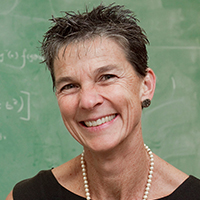

Christine Franklin (University of Georgia), and Anna Bargagliotti (Loyola Marymount University)
Abstract
In 2015, the American Statistical Association (ASA) published the Statistical Education of Teachers (SET) Report (Franklin et al., 2015). The report, aimed at teacher educators, lays out specific content that teachers of different grade levels should know while relying heavily on the GAISE framework (Franklin et al., 2007). We view the statistical investigative process in GAISE as the model teachers need to adapt for successful statistical instruction to enable students to understand the importance of showing and collecting data to answer statistical questions. For teachers to gain fluency with this model, we propose using the eight Mathematical Practices (MPs) under a statistical lens described in the SET report. Based on the NCTM process standards (NCTM, 2000) and the strands of mathematical proficiency specified in the National Research Council’s report Adding It Up (2001), the MPs are “processes math educators at all levels should seek to develop in their students” (NGA, 2010). In the SET report, these eight MPs are interpreted in ways that are relevant to the content domain of statistics and statistical thinking. The MP through a statistical lens provide teachers and students the tools to develop the statistical habits of mind necessary to practice statistical reasoning. We believe there is a connection between using the MP through a statistical lens and the self-efficacy of teachers. If we want to infuse data science ideas in K-12 education, teachers need to have a deep understanding of how people generate data every day, how data can be accessed and used to answer statistical questions. In this session, we discuss how the MPs through a statistical lens provide a roadmap to achieve the infusion of data science ideas into K-12. This session is part of multiple sessions on K-12 Teacher Development.
